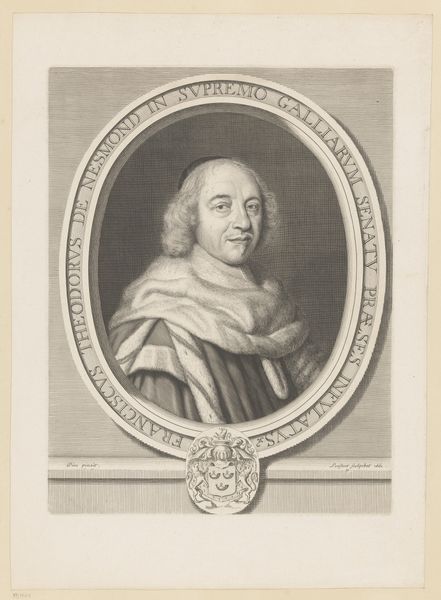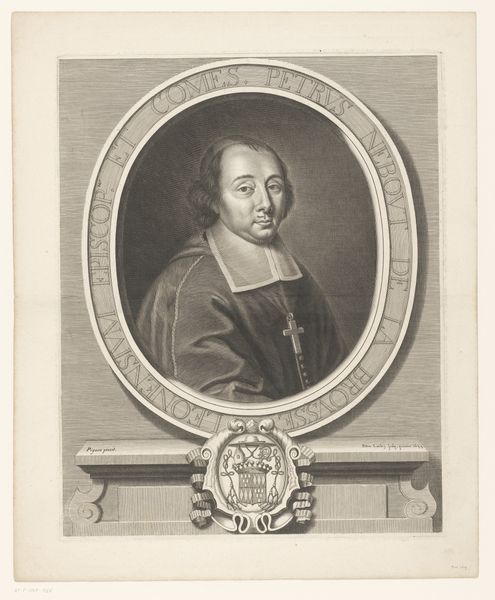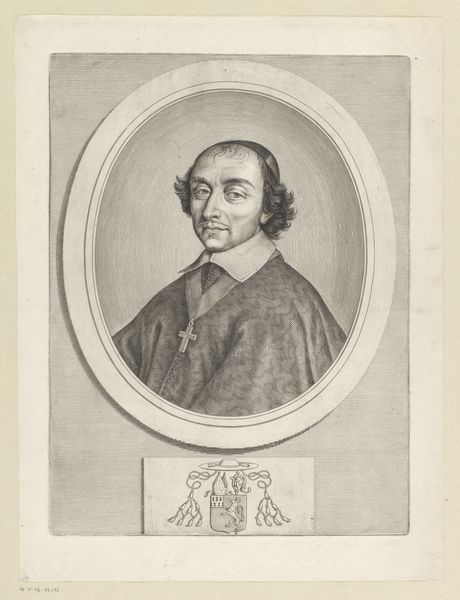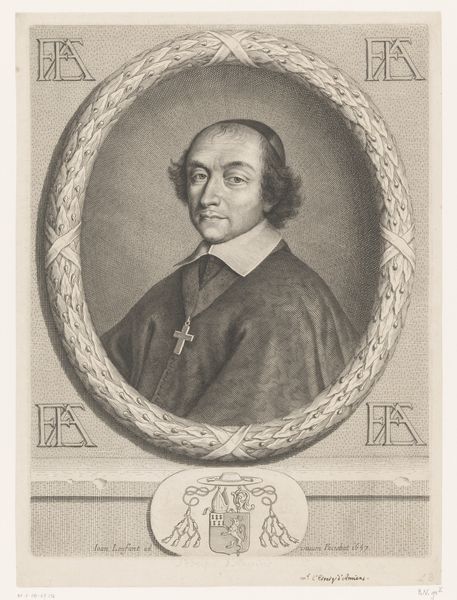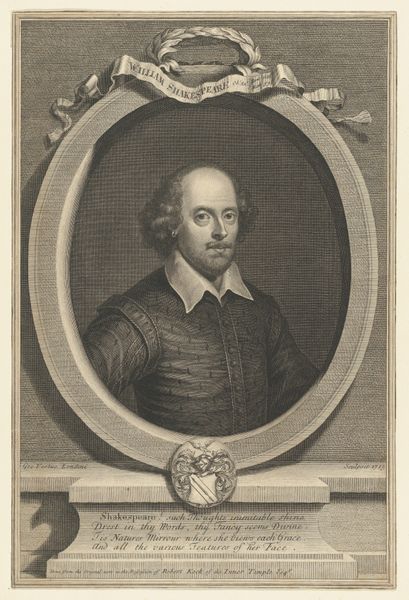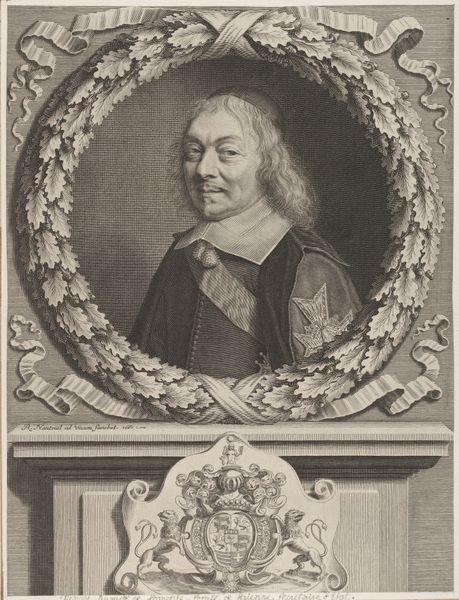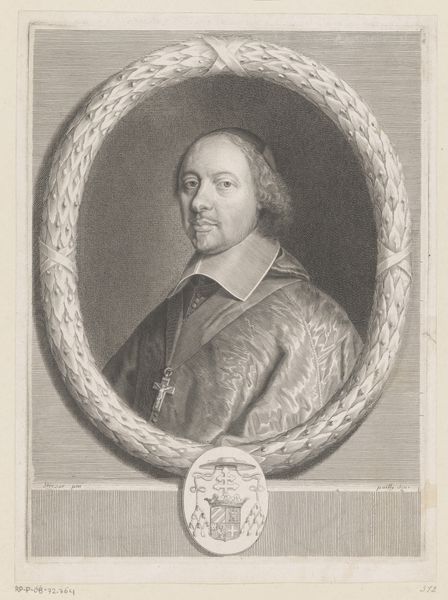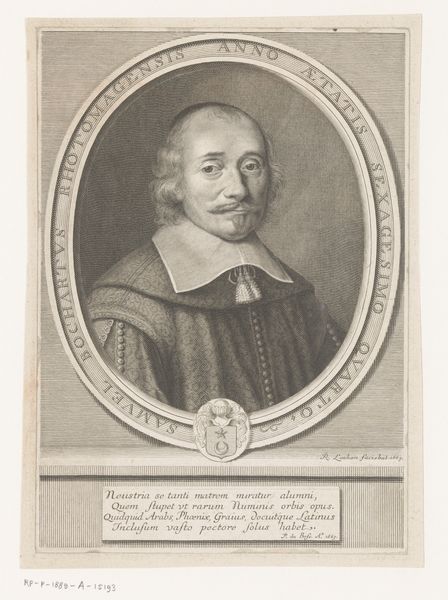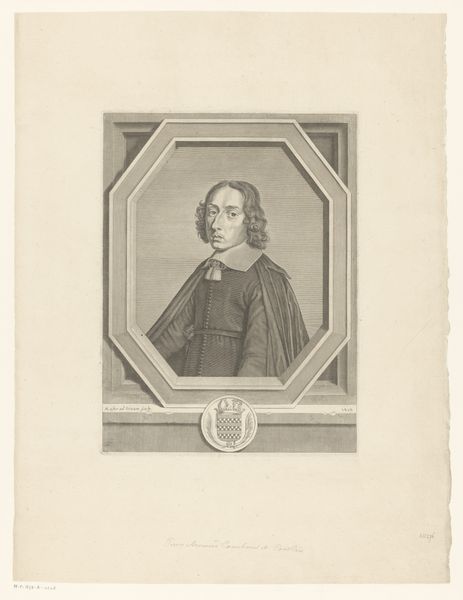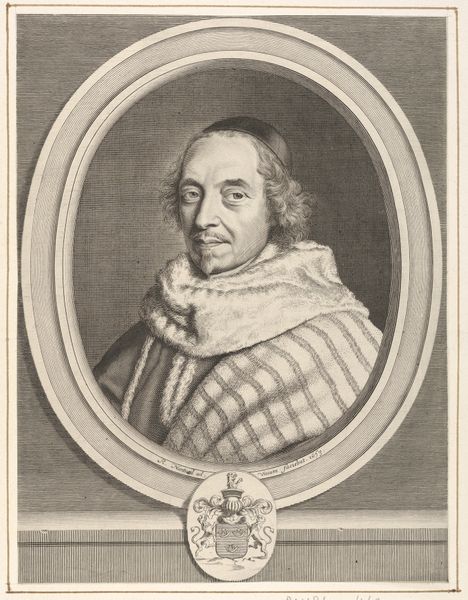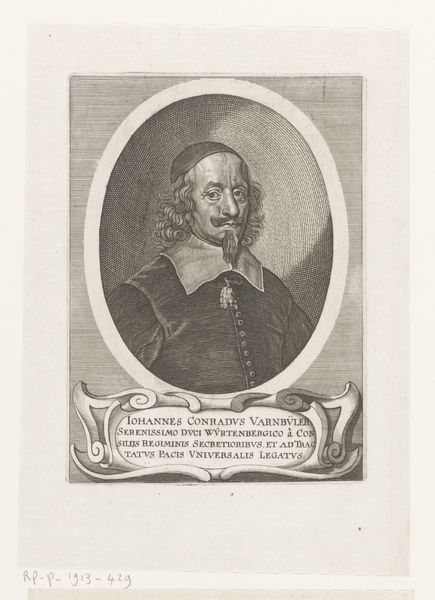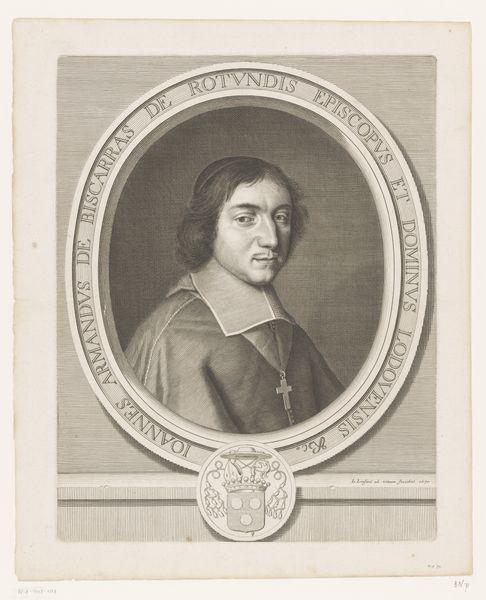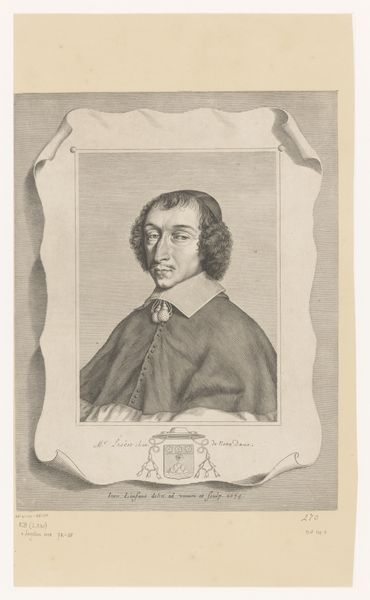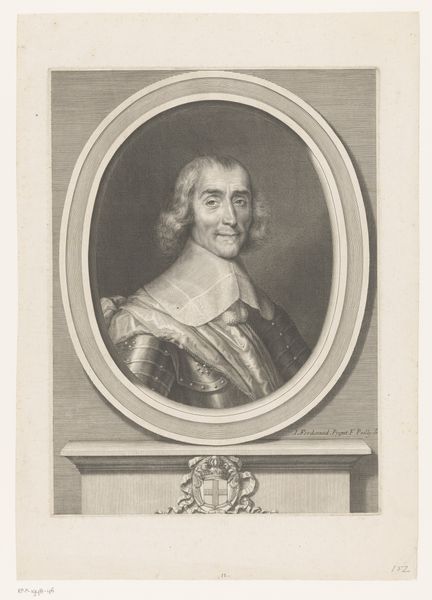
engraving
#
portrait
#
baroque
#
figuration
#
line
#
academic-art
#
engraving
#
realism
Dimensions: height 347 mm, width 279 mm
Copyright: Rijks Museum: Open Domain
Pierre Landry created this print of François Faure, likely in France during the late 17th century. It presents us with more than just an image of a man; it offers a glimpse into the rigid social structures of the time. The visual codes in this portrait speak volumes about Faure's status as a bishop. We see signifiers of power and religious authority: his clothing, the cross, and the inscription of his title, framing him in the oval. Landry’s work reflects the cultural and institutional power of the Catholic Church in France. The portraits were commissioned and widely circulated to reinforce social hierarchies. Understanding this artwork requires us to delve into the history of the church and its relationship with the state, the role of religious figures in governance, and the dynamics of class and power. As historians, we use resources such as church records, political documents, and other visual materials to better understand the social context that shaped not only the subject but also the creation and reception of this image.
Comments
No comments
Be the first to comment and join the conversation on the ultimate creative platform.
